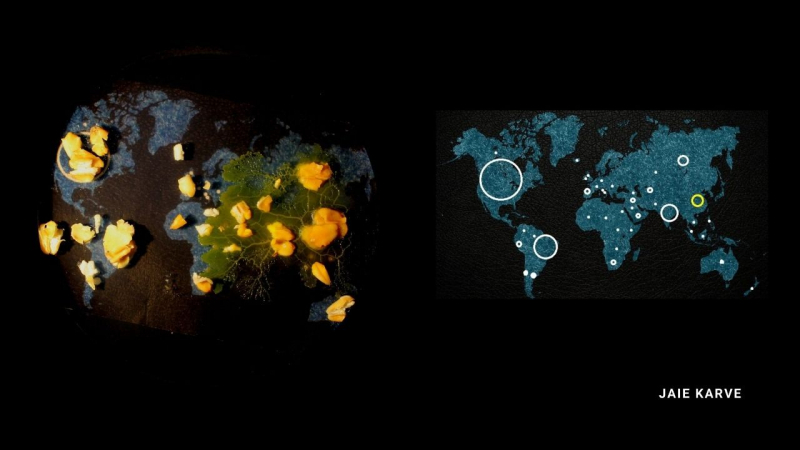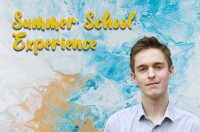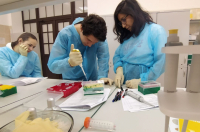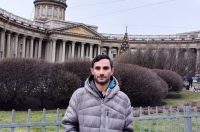Bioart has been steadily growing in popularity over the last few years; whether this type of art is going to go away or stay relevant is only something time can tell, but we can assure you that whatever happens it will still remain one of the most interesting topics of discussion in the contemporary art scene and within the Art&Science sphere. The idea of biological elements working together with artistic concepts and with a scope more focused on the artistic makes this subject a must to teach for some contemporary art teachers.
The summer school covered several topics, ranging from vegetal fibers, the aesthetic potential of microbial cellulose, and the philosophical implications of working with biomaterials to the development of innovative ideas that address issues of sustainability, ethics, and aesthetics of working with living organisms. It also allowed the participants to have their own small online exhibition at the end of the week. The program even included optional extracurricular activities such as Russian language classes, VR tours of St.Petersburg’s most famous museums and theatres, and a unique Russian cuisine workshop!
Jaie Karve and Sakshi Jinturkar, both from Mumbai, India, Jiawei Din from Xinjiang, China, and Irina Lebedeva from Moscow, Russia were all part of the summer school and we were able to catch up with them and ask them about this experience.
“This year, my term paper was about the phenomenon of mycelium in contemporary art and my academic advisor sent me a link on Instagram about this summer school. I'm studying how to analyze and write about bioart, and thanks to this course, I have discovered more about the materials which are used in bioart,” explains Irina Lebedeva, who is currently a part-time student at the Faculty of Art History at the Russian State University for the Humanities.
Participant Abu Lambert’s experiments with bioplastics. Credit: Laura Rodriguez for ITMO.NEWS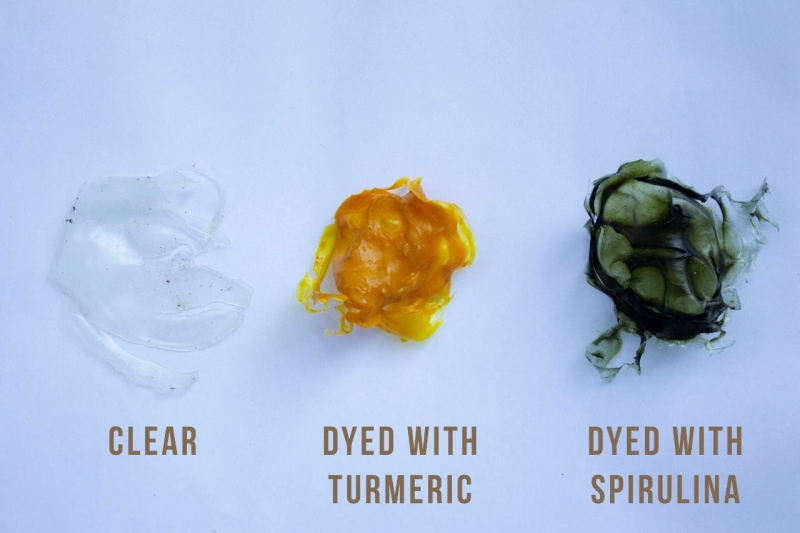
Throughout the course, participants were able to learn about the expanding history of art & science and some of the most famous and powerful artworks in this field and use it as inspiration for their future interactions with bioart. The magical part of art & science is how two (seemingly) completely different fields converge and harmoniously create works that attract and please both artists and scientists.
“After this class, I realized that there are many bioart works related to my major daily study (biology, biochemistry, environment, food technology, etc),” shares Jiawei Din who is currently doing a Master’s in Food Science Technology and Business in Leuven, Belgium. “Before this bioart class, I focused only on the science part, but now thanks to this course, I have the opportunity to appreciate them from a totally new point of view, and this is something very interesting. Furthermore, in my perspective, life is a kind of bioart itself. Art makes science more interesting and closer to the life of the public,”
Jaie Karve has just completed a Master’s in Design after having completed a Master’s in Pharmacy and Natural Product Chemistry and she was also inspired by the course.
“Understanding how the technical and creative fields converge and pave the way to new thoughts and processes is fascinating. It is interesting to see how those boundaries blur and lead to new perspectives”, she says.
Selfie in the virtual gallery. Credit: Laura Rodriguez for ITMO.NEWS
“The most interesting part is that it merges the two things that, if they go hand in hand, can solve almost impossible problems,” adds Sakshi Jinturkar who is an architect and computational designer..
Just like in the cinema classic The Wizard of Oz, there’s a point of no return, the famous “we’re not in Kansas anymore” line. This moment is very prevalent when learning about such subjects such as bioart where the limits are pushed and you find yourself in an entirely different place and setting. Seeing an artwork that talks to you (not literally) is a changing factor for the viewer and sheds some light on new ideas. Some of the students had something to say about what inspired them during this summer school.
“My favorite artwork is Heather Dewey Hagborg`s Stranger Visions. My last year’s term paper was about this artwork. Since I saw it at an exhibition in Shanghai, I was full of emotions! How was it possible to make this? What art is it? And this is how I found out about bioart,” shares Irina.
“My favorite ones were the most bizarre ones, like the woman injecting herself with a horse’s blood. The reason I like it is that such artworks are not publicized generally, so explaining the work and showing the why of its existence gives a good insight,” explains Sakshi.
“The artwork that inspired me the most is the bioplastic artwork,” explains Jiawei Din. “When I practice making bioplastic artworks at home, I feel there are many artwork possibilities in the use of starch. The teacher showed us a lot in the class, and as a food technology student, I feel there is also the possibility of using the same processing method as making starch decorations to make beautiful desserts or snacks. Of course, there would be a lot of work on formulation research, but this artwork made me think a lot about the product of starch DIY dessert, which makes me excited.”
Several students also praised the attitude and knowledge of their teacher, Laura Rodriguez. Some of the participants are even considering looking for more courses related to art & science, while others want to dedicate themselves in the future to bio-design.
You can visit the summer school’s virtual gallery to see its final results for yourself!
Written by Ethan Avila
